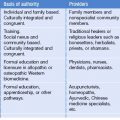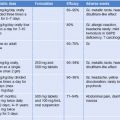CHAPTER 6 Communicating with Limited English Proficient Patients
Interpreter Services
The need to ensure linguistic access to healthcare for limited English proficient (LEP) patients through the use of bilingual providers or trained interpreters can be understood from four primary perspectives: regulatory, demographic, financial, and quality. The regulatory basis for the provision of interpreter services was covered in Chapter 5, so the focus here will be on the demographic, financial, and quality perspectives, all illustrated in the following patient experience.
The Demographic Perspective
According to the 2000 census,3 more than 21 million individuals in the US have limited English proficiency or identify themselves as speaking English less than ‘very well.’ LEP populations grew more than 100% in fifteen states between 1990 and 2000 with significant growth occurring in rural as well as urban settings. As LEP populations have grown, so too has the need for healthcare organizations to find ways to effectively bridge the language gap between providers and their patients. A key first step in doing this is to identify the primary language groups in one’s service area. The language map available through the Modern Languages Association (www.mla.org) is a very useful tool for accomplishing this. It allows users to search for 30 different languages by state, county, city, and zip code. Other good sources of population estimates are community-based organizations and refugee resettlement agencies that serve new refugee and immigrant arrivals in a particular area. Collecting race/ethnicity and language preference data, covered in Chapter 7, offers an additional snapshot of the demographic trends that should shape the interpreter services developed in a particular organization.
The Financial Perspective
Many healthcare organizations consider cost to be one of the most significant barriers to ensuring linguistic access to their LEP populations. Yet research has shown that the cost of not providing trained interpreters could be significantly higher than the cost of providing them. A 2002 US government report estimated that ‘healthcare providers could spend up to $267.6 million on language services for approximately 66.1 million ER visits, inpatient hospital visits, outpatient physician visits, and dental visits by LEP persons. This represents about $4.04 per visit or a 0.5% premium.’4 At the same time, there is a growing body of research documenting areas in which failure to bridge the communication gap between LEP patients and their providers is adding significant, measurable costs to the healthcare system. The most obvious of these is the increased risk of litigation due to non-compliance with federal regulations. In one high-profile malpractice case, a family was awarded $71 million when a paramedic’s misinterpretation of a young boy’s Spanish – taking ‘intoxicado’ to mean ‘intoxicated’ rather than ‘nauseated’ as was intended – led to the boy being evaluated for drug abuse over a period of several days. He was later found to have suffered a ruptured brain aneurysm. Delay in appropriate treatment left him quadriplegic.5
In two separate research studies, an unaddressed language barrier led to increased usage of diagnostic testing.6,7 The Hampers and McNulty study also reported an increased rate of hospital admission in the absence of a bilingual provider or professional interpreter. The general conclusion: when faced with a language barrier, providers tend to be more cautious – and more expensive – decision-makers.
A third study, conducted to assess the impact of interpreter services on the cost and utilization of healthcare services among LEP patients, found that the provision of professional interpreter services resulted in a statistically significant increase in receipt of preventive and primary care services, which has the potential of reducing costly complications of chronic conditions such as diabetes or heart disease.8 Similarly, research conducted at the Boston Medical Center found that the use of trained medical interpreters reduces Emergency Department (ED) services and charges. When trained interpreters were used to meet the language needs of patients in this study, there was an associated reduction in ED return rates, increased utilization of outpatient clinics, and lower 30-day charges without any concurrent increase in visit costs or length of stay.9
The Quality Perspective
Healthcare providers should understand the critical role of language services in improving health outcomes. Language barriers and inadequate funding of language services inhibit LEP persons’ access to healthcare and pose a risk to the quality of care they receive.10,11 LEP patients are less likely to have a regular source of care,12,13 are more likely to report overall problems with care,14 and are more at risk of experiencing medical errors.15
In contrast, using trained interpreters reduces medical errors, increases patient compliance, increases patient satisfaction, and improves primary care utilization,16 thus improving the overall quality of healthcare and health outcomes for LEP patients. A research team from the University of California, Los Angeles, analyzed data on 26 298 parents of children enrolled in the California State Children’s Health Insurance Program and found that providing trained medical interpreters can substantially improve how patients experience care. Providing interpreting services to those who needed them produced a 9% improvement in the communication measure for Hispanics and a 23% improvement for Asian/Pacific Islanders.17
A systematic literature review was conducted in 2005 by Glen Flores on the impact of interpreter services on quality of care.18 In his review, Flores focused on three separate categories:
The most thorough studies yielded the following conclusions:
Flores concludes: ‘This systematic review of the literature indicates that additional studies employing rigorous methods are needed on the most effective and least costly ways to provide interpreter services to LEP patients. But available evidence suggests that optimal communication, the highest satisfaction, the best outcomes, and the fewest errors with potential clinical consequence occur when LEP patients have access to trained professional interpreters or bilingual healthcare providers.’18
Providing language assistance ultimately puts the patient in the forefront and in a role of control equal to any English speaker’s experience, which is key to beginning to reduce the racial and ethnic disparities that exist in healthcare. Healthcare providers can be assured of accurate, reliable transmission of their communication and patients can be assured of better understanding of their diagnosis and treatment options only when professional interpreters are used to bridge the language gap.
Ensuring linguistic access
Bilingual/bicultural healthcare providers
An ideal strategy is for provider and patient to speak the same language, but this requires fluency in both parties. False fluency, in which a provider believes he is more competent than he actually is, can lead to serious miscommunication. While such miscommunication can be humorous – such as during a fetal ultrasound when a provider announced to a proud mother-to-be that he saw her baby’s beer (cerveza) instead of her baby’s head (cabeza) – it can also have dangerous consequences. In testimony before the US Senate Committee on Health, Education, Labor and Pensions Subcommittee on Public Health, Dr. Glenn Flores told the story of a young Latino girl who, with her brother, was taken into custody by the Department of Social Services for 48 hours after a medical resident who identified himself as Spanish-speaking made a serious interpretation error. When the girl’s mother was asked how the little girl had fractured her right collarbone, she responded, ‘Se pegó, se pegó’ or ‘she fell and hit herself,’ not ‘she was hit’ as the resident physician interpreted the response.19
Healthcare providers should be tested for fluency before assuming that they can satisfactorily communicate in the language of the patient. Catherine Dower, associate director of the University of California–San Francisco’s Center for the Health Professions, states that a ‘credentialing system’ should be established to identify clinicians who are proficient in foreign languages. She also argues that they should be offered financial incentives for their bilingual skills. This would allow patients to more easily choose physicians who speak their native language.20 Healthcare provider directories should indicate language proficiency among clinicians listed to make it easier for LEP patients to choose a physician who can provide care in their native language.








